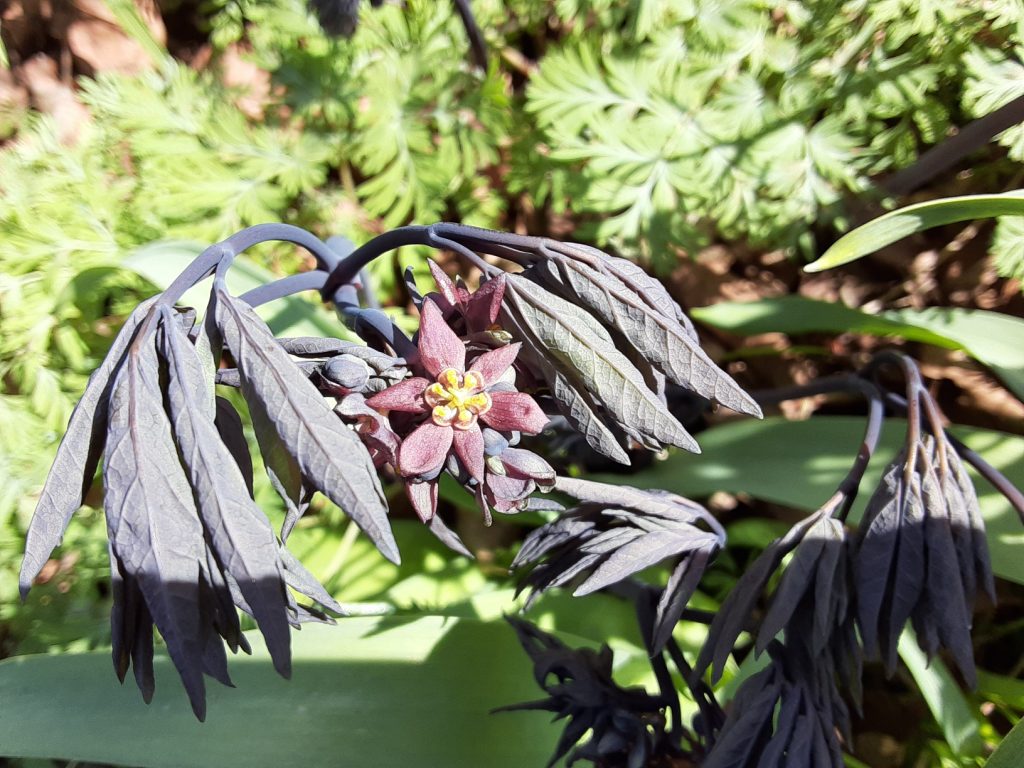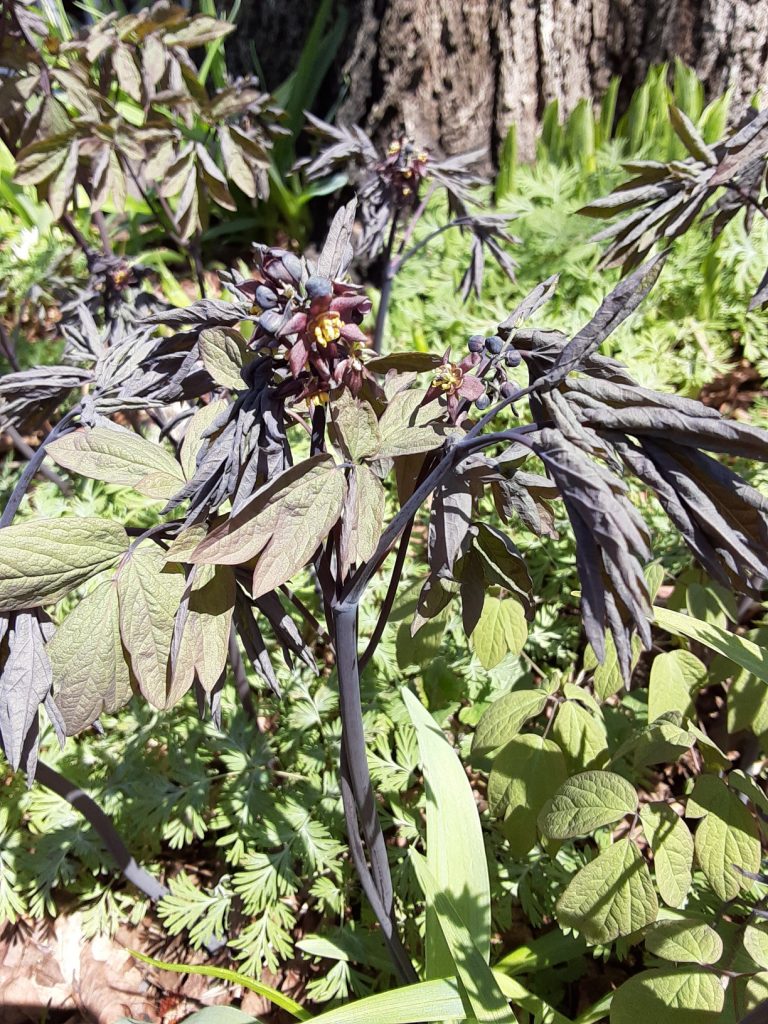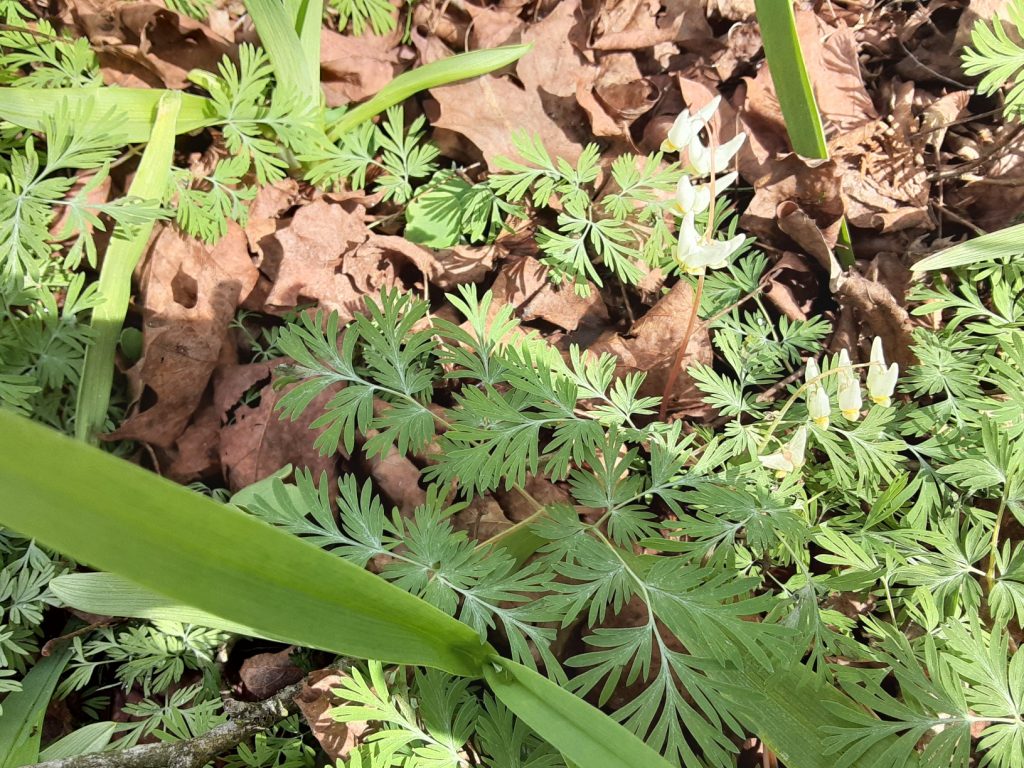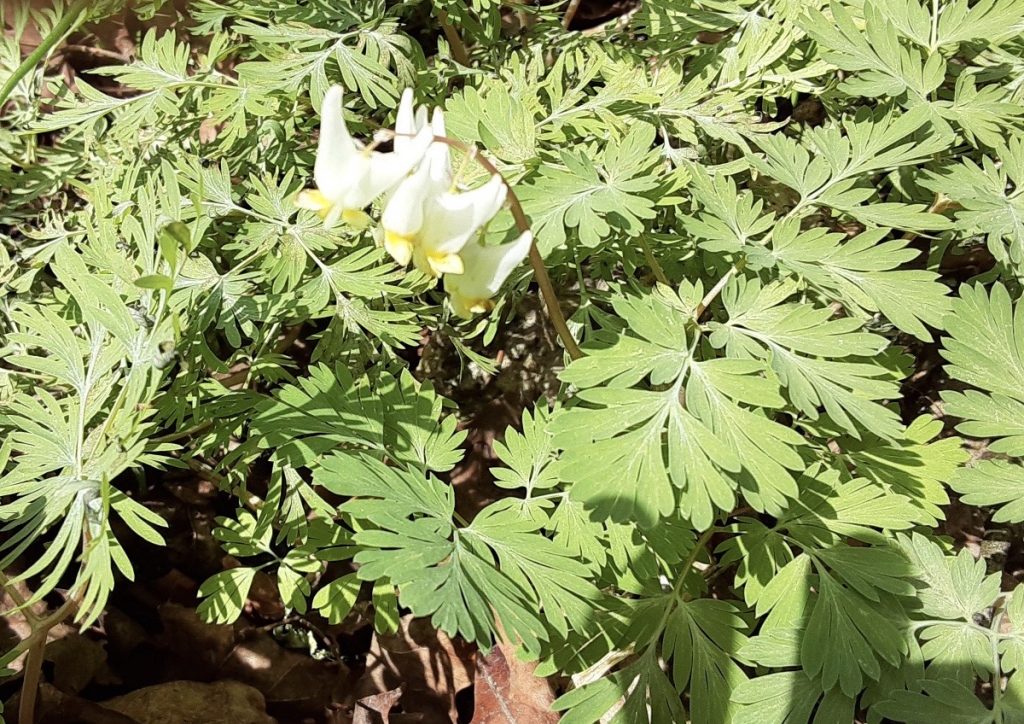By: Susan Sprout
Find out what’s underfoot with NPC member and environmental educator, Susan Sprout! Catch up on past issues of Underfoot: Introduction & Bloodroot, Trout Lily & Coltsfoot.
Blue Cohosh
As you walk through the moist richness of spring woods, you may notice plants of a totally different hue standing out from all of the various greens. If the stems, leaves, and flowers are a dark bluish-purple color, the plants are Blue Cohosh.
This plant is tri-ternate and is organized in groups of threes. Its first leaf of the season has a stem that separates into three branches, each dividing into three parts and having three leaflets. The flowers are divided into six parts with yellow nectar glands in the center to entice early bees for pollination. Deep blue seeds appear later. They look like blueberries, but are not considered edible. This native plant is a member of the Barberry Family, Berberidaceae, and was sought out by many different Native American tribes for its medicinal root which they harvested in the fall.
Dutchman’s Breeches
Above a puddle of grayish-green, deeply-cut, and feathery basal leaves, you may see an ersatz clothesline stem of creamy white flowers that appear like pairs of pantaloons hung up to dry. This unique plant of the Poppy Family, Papaveraceae, is Dutchman’s Breeches. Common names come into popular usage because they reflect the looks, use, or habitat of a plant. This one certainly fits!
Its fragrant two-spurred flowers are pollinated by bumblebees whose proboscis unlike that of a honeybee is long enough to reach the nectar. Years ago I took one plant growing near a friend’s cabin and planted it under our big maple. Its progeny now carpet that area in
early spring.
Susan Sprout is a retired school teacher who continued teaching after retirement at Montour Preserve helping teachers of handicapped students with nature walks, at the National Shell Museum as a curator of the fossil collection, and as teacher of Shell Studies at the local school on Sanibel Island. Based on her love and study of plants, she does living history presentations of medicinal plants used by Native Americans, colonial immigrants, and people living during the Civil War. Both she and her husband, Richard, serve as cannoneers with Thompson’s Independent Battery C PA Light Artillery. Sue has served on the Northcentral Pennsylvania Conservancy board in the past. The Sprouts have been Conservancy members for 29 years.





